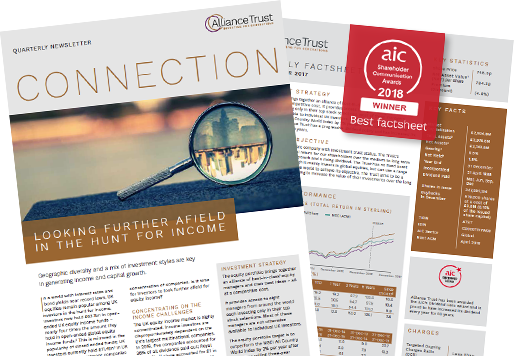Two decades after the tech bubble burst, it is the tech titans that are leading the market higher but should increasing market concentration be worrying investors?
During the tech boom and bust, Robin Brown worked for Worldcom. It became subject to the worst accounting scandal and biggest technology company bankruptcy in US history – and remains so today. For Brown, now a managing director at Stephens Europe where he leads a UK-based team covering the technology sector, much has since changed.
“The creation of the internet led to a mentality of ‘if you build it, they will come’. For the dotcoms, the plan was to simply get online and gain eyeballs without any thinking of how to address the long-term needs of the end client. I saw first-hand the explosion of fibre optic network capex, which was fuelled by waves and waves of investor capital.
“With a lack of cash flows, the dotcom era was also characterised by significant fraudulent activity as companies looked to justify the lofty valuations by artificially inflating revenues and notional profits.
“Fast forward to today, technology companies are not scared of capex development, but this is only undertaken after identifying solid earnings visibility over a multi-year timeframe. A good example of this currently is investment in cloud infrastructure capable of delivering highly profitable, multi-year, extremely low churn revenue.”
Others, however, are less convinced that the march of the tech titans is significantly different this time around.
“I’m always very wary of tech concentration,” said Francis Klonowski, proprietor of Leeds-based one-man-band Klonowski & Co. “I remember the hype and subsequent downfall 20 years ago all too well and no, I wasn’t taken in at the time. If an investment trend is so hyped that it acquires an acronym it may be best avoided.”
Growing concentration
The five largest listed US companies now account for a bigger slice of the stock market than at the peak of the dotcom bubble in 1999. The combined market capitalisation of Microsoft, Apple, Amazon, Facebook and Alphabet (Google’s parent) has more than doubled from roughly 8% of the S&P 500 index in 2015 to nearly 20% today.
Known as the ‘FAAMGs’, a term increasingly preferred to ‘FAANGs’ to include Microsoft at the expense of Netflix (the former being the largest public company in the US and more than seven times the size of the latter in 20th place), they have contributed 22% of a 74% rise in the S&P 500 in the five years to 2019.
They are outperforming during this year’s sell-off too – falling less than the average S&P 500 company or continuing their ascent. This is seen most acutely in Amazon – its shares soared 30% in the first quarter alone as the global lockdown stokes demand for online retail.
The outlook for the global technology sector is positive, according to Brooks Macdonald, which lists it as one of its preferred thematic investments alongside healthcare.
“Post the pandemic, we continue to see long-term growth from technology’s ability to identify, enter and disrupt new markets, creating new revenue streams and posing barriers to entry for those without first-mover scale advantage,” said investment strategist Matthew Cady. “We also see COVID-19 creating opportunities for technology as economies seek to improve their resilience to future shocks.”
That is not to say that today’s winners will retain their market-leading positions. Just as Microsoft was considered a tech dinosaur and a value stock eight or nine years ago, today’s dominant firms could be tomorrow’s Nokia or Blackberry.
“Technology exists in a constant state of creative disruption,” said James Carthew, founder of investment research firm QuotedData. “What was once cutting edge can soon become obsolete – take MySpace and Friends Reunited versus Facebook as an example or Ask Jeeves versus Google.”
For Jean Matterson, a former partner at Rossie House Investment Management, each stock should be valued on its merit.
“It is important to understand the underlying companies,” she said. “Microsoft was a pioneer in computer software but is now almost seen as a commodity, and as such has a more modest rating [than other large tech stocks]. Vodafone was once a go-go stock but is also now perceived as a commodity – in its day it was a creator of new technology.”
She prefers the risk/reward profile of some of the smaller tech companies, which can have exponential growth, but whose technology may also fail.
Five risks
If shrewd stock-picking is important, so too is avoiding overconcentration in a sector that is growing in dominance – and faces several looming risks.
1. Tougher regulation
The prospect of greater regulatory scrutiny of technology giants is a concern for MitonOptimal UK. “What concerns my team more than any other factor is government intervention via legislation to counteract the dominance that some of the names in the sector are enjoying,” said its managing director James Sullivan.
“Share prices are often are leading indicators and price in many years of future growth. Should that growth be disrupted, the sector is likely to witness some material volatility.”
He wants to protect client portfolios from being subject to a narrow set of company results or changes in legislation that “can often blindside investors”.
“It seems foolish not to have a foot in the technology camp given the way the world is going, but we want to diversify away from the concentrated ‘FAANG’ exposures; the comfort of not being unduly exposed to any one stock or industry is often a priceless one,” he added.
2. Higher taxation
For Wise Funds, a further headwind to tech giants’ dominance is likely to come in the form of higher taxation as governments count the cost of supporting businesses during the coronavirus pandemic. “US equities, which dominate MSCI world indices, are themselves dominated by a small number of tech ‘unicorns’ which are priced for secular growth, perhaps ignoring the challenges of higher taxation and regulation which await them,” said portfolio manager Tony Yarrow.
“Bearing in mind that no investment trend lasts forever, and that the ones we see in today’s markets are mature, it would appear sensible for investors to reflect on how a combination of central bank intervention and investor risk-aversion have led to market valuations never before seen in history, with extreme optimism in some asset classes co-existing with extreme pessimism in others. An independent viewpoint, careful asset selection and a degree of diversification may produce better returns than vehicles such as ETFs which reflect the consensus view.”
3. A weaker dollar
Because the technology sector has significant regional exposure to the US, broader US factors help to shape its fortunes. US constituents account for more than three-quarters (76%) of the MSCI Information Technology index, with Microsoft and Apple jointly making up around 30% of the sector globally.
“As much as the sector is dependent on technology specific issues, we also have to consider broader US factors, not least the direction for the US dollar,” said Brooks Macdonald’s Cady.
“There is a strong correlation between the strength of the US currency and relative outperformance of US versus rest of world equities. Currently, we continue to see an environment where the US dollar is likely to hold its preference over other currencies, but should this be challenged, a weaker dollar outlook might encourage non-US equities as this would be liquidity positive, especially for areas such as more cyclical emerging markets.”
4. Rising inflation
Alongside the emergence of the ‘internet of things’, a lack of growth elsewhere in the stock market and rock bottom interest rates on the back of low inflation have helped to catapult tech stocks higher. However, massive fiscal packages around the world may lead to higher inflation at some stage.
“If the world eventually looks very different on the other side of the pandemic – if we do have higher than normal growth and higher inflation – then growth will not be so scarce and interest rates will be higher,” said FundCalibre research analyst Chris Salih.
“Both of those are significantly negative for growth stocks and possibly especially negative for this group of growth stocks because they’re so widely over-owned.”
With the pandemic acting as a catalyst for the digital revolution, he advocates gaining exposure through active managers able to evaluate valuations and growth potential and diversify across sectors, geographies and company sizes.
5. A return to value
Investors paying up for growth and quality have caused unprecedented value differentials between favoured and unfavoured assets. Value has underperformed growth for a long time, but how long can this carry on for?
Yarrow, also a value investor, said: “Investors overlook the profound changes over the last decade – in the way that insurance companies and housebuilders run their businesses, for instance. When COVID[-19] has run its course, they’re going to see that – surprise, surprise – they’re doing quite well. We’re also going to see who’s paying dividends. Investors like dividends and will reward companies that can afford to pay them.”
How I Invest in Tech
A collapse in confidence in the tech titans could drag down the entire stock market, given their high benchmark weights – active fund management and a measured approach are equally important. We gauged the views and approaches to tech exposure of five investment professionals:
CRAIG BAKER, WILLIS TOWERS WATSON
“Alliance Trust has benefitted from exposure to the FAAMGs and, at the moment, we’re slightly overweight that group of stocks, although we have no exposure to Apple. However, the portfolio is underweight mega-cap caps stocks in general, with our stock pickers seeing more opportunity in small and mid-cap names that have been overlooked and have greater potential for share price appreciation in the long run. Some of the FAAMGs have attractive defensive qualities in the current environment, but the narrow market leadership that we have seen in the last two years is unlikely to last forever."
David Liddell, IPSOFACTO INVESTOR
With high market concentration in the mega cap tech names, , online investment service IpsoFacto Investor emphasise the importance of diversification.
“We prefer to get exposure to these companies through well diversified global portfolios,” said director David Liddell.
“At the end of March, we used share price weakness to buy back into Alliance Trust on a wide discount for our mainstream investment trust portfolio. With its provision of several specialist fund managers and what ought to be a secure dividend, it remains one of the go-to choices for the private investor.”
FRANCIS KLONOWSKI, KLONOWSKI & CO
Francis Klonowski of Leeds-based Klonowski & Co has held Alliance Trust for 25 years. Once one of several equity funds used for a client, it became a one-stop-shop in March 2017 when it adopted a multi-manager approach.
“I like Alliance Trust for its sort of mini portfolio in a fund approach,” he said. “A well-diversified portfolio housed within an investment trust with all the advantages that brings – low cost, closed-ended, occasionally trading at a discount and a reliable dividend history – it takes me back to the first article I read about multi-manager funds in 1995: why would you want to spend time choosing individual managers, strategies or sectors?”
JAMES SULLIVAN, MITONOPTIMAL UK
MitonOptimal holds Alliance Trust at the core of its multi-asset portfolios and adds satellite holdings in areas like mainstream technology, healthcare innovation and renewable energy.
“Overreliance on a theme that will have bumps in the road may be a little too brave for most,” said director James Sullivan.
“We utilise Alliance Trust as a platform upon which we can build. It offers our clients stability and dependency, ensuring we capture the market ‘beta’. From this foundation, we can take a view on markets and add or reduce risk around the fringes to our favoured themes and ideas, tailoring our overall risk exposures to suit the environment.”
JOHN NEWLANDS, NEWLANDS RESEARCH
John Newlands has researched the investment trust universe for more than two decades and advocates getting exposure to technology through a diversified global equity fund.
“Technology is now threaded through every company, sector and market. While some investors have done very well by investing in specialist tech funds, it’s not a ‘sleep at night’ way to generate long-term investment returns,” he said.
“Alliance Trust has withstood every trend, boom, bust and recession since the 19th century, become battle-hardened along the way and ensured its portfolio is diversified beyond the hot sector of the moment. Putting regular savings into Alliance is one of the most snooze-worthy ways of building a financial nest egg.”






